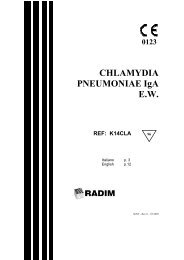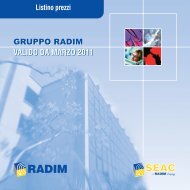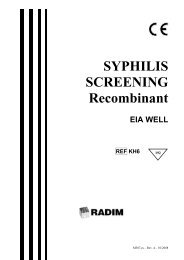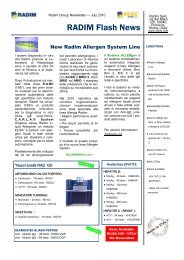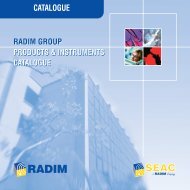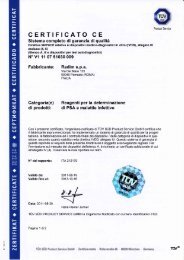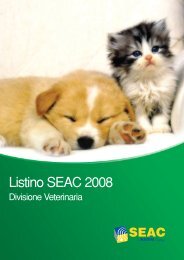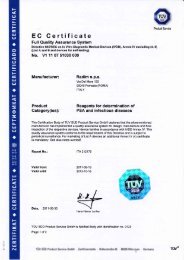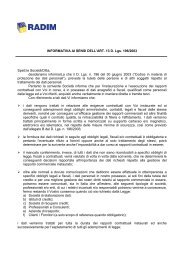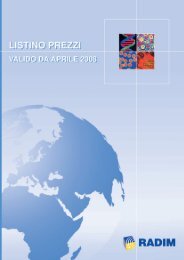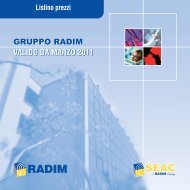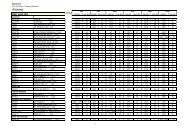CagA IgG EIA WELL REF K6HPG - Radim S.p.A.
CagA IgG EIA WELL REF K6HPG - Radim S.p.A.
CagA IgG EIA WELL REF K6HPG - Radim S.p.A.
You also want an ePaper? Increase the reach of your titles
YUMPU automatically turns print PDFs into web optimized ePapers that Google loves.
originating from either manual and/or automated processing are classified as<br />
hazardous special waste material (European classification code180103). As<br />
such, they must be eliminated by delegating to special enterprises, qualified for<br />
waste collection and disposal.<br />
6. SPECIMEN COLLECTION AND PREPARATION<br />
The assay can be performed in serum or plasma samples. Moderately lipemic<br />
samples do not influence the results; highly lipemic or hemolyzed samples may<br />
affect the results. The presence of fibrin filaments could interfere with the assay;<br />
make sure that samples are always perfectly clear before testing. Keep samples<br />
properly stored at 2-8°C for 1 week; for longer periods it is advisable to freeze<br />
samples at -20°C. Repeated freezing and thawing of samples should be avoided.<br />
Before use, dilute samples 1:300 with previously diluted Sample Diluent (ex.10 µL<br />
sample + 2990 µL Diluent).<br />
7. ASSAY PROCEDURE*<br />
− Allow reagents and samples to warm up to room temperature.<br />
− Mix samples by inversion before use.<br />
7.1 Prepare the wells for: Blank, Calibrators and Samples.<br />
7.2 Pipette 100 µL of Calibrators and previously diluted Samples into the<br />
corresponding wells.<br />
Note: Calibrators must not be diluted.<br />
7.3 Pipette 100 µL of Sample Diluent into the Blank well.<br />
7.4 Cover the microplate with adhesive sheet (supplied with the kit) and<br />
incubate for 60±5 minutes at 37±2°C.<br />
7.5 Wash the wells 4 times with 350 µL of diluted Washing Solution. Aspirate all<br />
liquid from the wells.<br />
7.6 Add 100 µL of Enzyme Conjugate into all wells.<br />
7.7 Cover the microplate with adhesive sheet (supplied with the kit) and<br />
incubate for 30±2 minutes at 37±2°C.<br />
7.8 Wash the wells as described in point 7.5.<br />
7.9 Pipette 100 µL of Chromogen into all wells.<br />
7.10 Incubate for 15 minutes at 37±2°C. Avoid direct light exposure.<br />
7.11 Dispense 100 µL of Blocking Reagent into each well.<br />
7.12 Read the absorbance of the wells with a preferably bichromatic<br />
spectrophotometer at 450 nm, with reference wavelength at 620 nm (setting<br />
the instrument at zero with the Blank well). In case of overflow absorbance<br />
values, read at 405 nm. Reading must be completed within 15 minutes from<br />
the end of the assay.<br />
* While using for the procedure a RADIM and/or SEAC automatic instrument for<br />
microplates, refer to its relative manual.<br />
<strong>K6HPG</strong> –<strong>CagA</strong> <strong>IgG</strong> <strong>EIA</strong> <strong>WELL</strong><br />
M197 – Rev.9 – 06/2008 – Pag. 16/ 24



